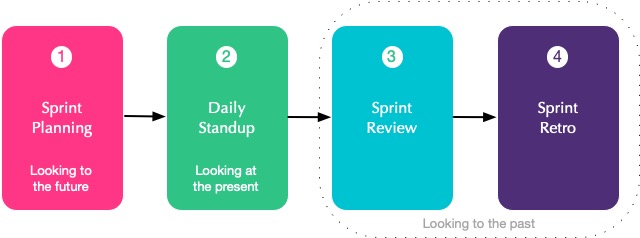
Sprints begin with Sprint Planning. The team sets the sprint goal and selects user stories from the product backlog for the next iteration.
They estimate each story’s effort and create a sprint backlog which acts as a roadmap for the work to be done. Sprint Planning aligns everyone on the sprint goal and clarifies roles and responsibilities.
Throughout the sprint, the Daily Standup plays a crucial role in keeping the team in sync. It is a short, time-boxed meeting where each team member shares their progress, plans, and any blockers they are facing.
The Daily Standup fosters transparency, collaboration, and accountability, allowing the team to adapt and make necessary adjustments to achieve their sprint goal.
Sprint Review vs Retrospective
Now, let’s explore the distinction between the Sprint Review and Sprint Retrospective. The key difference is that a Sprint Review focuses on improving the product, whereas a Sprint Retrospective focuses on improving the overall system and team dynamics.
Sprint Review
During the Sprint Review, the team presents the work completed during the sprint to stakeholders and gathers feedback. This feedback drives product enhancements and helps the team align their future efforts with customer needs.
The Sprint Review is an opportunity for the team to reflect on their progress and identify areas for improvement, ultimately aiming to deliver a better product.
Sprint Retrospective
On the other hand, the Sprint Retrospective centers on the team’s processes and collaboration. It is a dedicated time for the team to inspect and adapt their working methods, identify bottlenecks, and brainstorm solutions to enhance their efficiency and effectiveness. The Sprint Retrospective focuses on creating a harmonious work environment and finding a flow where the team can collaborate seamlessly.